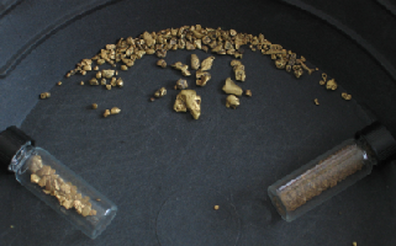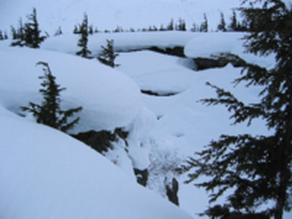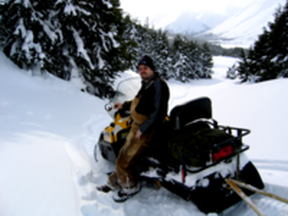TIncan Creek 2008
We Had an exiting time on our Tincan creek mining claims in 2008. We did find some really nice gold & learned a lot about the geology of the area.
We decided to sample much further up on our claims. As with most mining areas, the harder to access the area, the higher the probability of locating previously undiscovered & un-worked gold deposits.
This makes for some often challenging logistical issues such as how to get a 500lb gold dredge into a deep gourge, and better yet, how to get it back out again!
We decided to sample much further up on our claims. As with most mining areas, the harder to access the area, the higher the probability of locating previously undiscovered & un-worked gold deposits.
This makes for some often challenging logistical issues such as how to get a 500lb gold dredge into a deep gourge, and better yet, how to get it back out again!

The entire creek is only about 5 miles in length.
The sources of Tincan Creek are two small glaciers which melt and run together feeding into a beautiful mile wide valley. The creek meanders through this valley for about 2 miles. It then narrows into a deep canyon gorge about a mile long which drops steeply with several waterfalls. Tincan and Lyon creeks run together forming the headwaters of Granite Creek.
The picture on the left is Tincan Creek gorge.
We spent the last 2 years working with the US Forest Service to acquire a working plan of operations that would grant us limited winter access with a snow machine (Snow machine is Alaskan for snowmobile).
Sarah & I began using our snow machine early spring with about 10 - 12 feet of snow on the ground bringing in our equipment & supplies to begin our mining season.
The sources of Tincan Creek are two small glaciers which melt and run together feeding into a beautiful mile wide valley. The creek meanders through this valley for about 2 miles. It then narrows into a deep canyon gorge about a mile long which drops steeply with several waterfalls. Tincan and Lyon creeks run together forming the headwaters of Granite Creek.
The picture on the left is Tincan Creek gorge.
We spent the last 2 years working with the US Forest Service to acquire a working plan of operations that would grant us limited winter access with a snow machine (Snow machine is Alaskan for snowmobile).
Sarah & I began using our snow machine early spring with about 10 - 12 feet of snow on the ground bringing in our equipment & supplies to begin our mining season.
We were blessed with really great spring time weather which helped in getting our equipment up the mountain. The greatest challenge was the around of deep powder snow. If you stepped off your snow machine you would literally find yourself buried up to your waist. It took a couple trips in to finally get the snow packed into a nice trail.
This amount of snow also caused extremely high avalanche risk. We arrived at the upper canyon dredge site to find massive cornices overhanging the canyon.
This amount of snow also caused extremely high avalanche risk. We arrived at the upper canyon dredge site to find massive cornices overhanging the canyon.

No Amount of gold is worth dying for, I do believe in The Lord, & know heaven exists, but I'm not in that much of a hurry to get there. With this kind of conditions we decided to wait for safer conditions before decending into the canyon. This did limit our spring dredging a bit.
The good news is that we had a very cold, wet summer, one of the coolest summers on record for Anchorage. This meant the glacial melt was very light. With less glacier melting, we had much better dredging conditions in the summer. Clear & low water from August to October. The area also proved to be fairly productive.
It typically takes a lot of sampling to really get a good idea of how productive an area will be. Every stream deposits gold differently. Some pay streaks seem so be in gravel layers, others are on bedrock. With each year we mine on Tincan, we learn a bit more of how the gold was deposited. This in turn makes it easier to recognize areas that are more likely to be productive in our allusive search for the golden treasures God left here for us to find.
I will try & get more of our trips posted online as time permits. Thanks for reading, and Happy Prospecting!
The good news is that we had a very cold, wet summer, one of the coolest summers on record for Anchorage. This meant the glacial melt was very light. With less glacier melting, we had much better dredging conditions in the summer. Clear & low water from August to October. The area also proved to be fairly productive.
It typically takes a lot of sampling to really get a good idea of how productive an area will be. Every stream deposits gold differently. Some pay streaks seem so be in gravel layers, others are on bedrock. With each year we mine on Tincan, we learn a bit more of how the gold was deposited. This in turn makes it easier to recognize areas that are more likely to be productive in our allusive search for the golden treasures God left here for us to find.
I will try & get more of our trips posted online as time permits. Thanks for reading, and Happy Prospecting!





